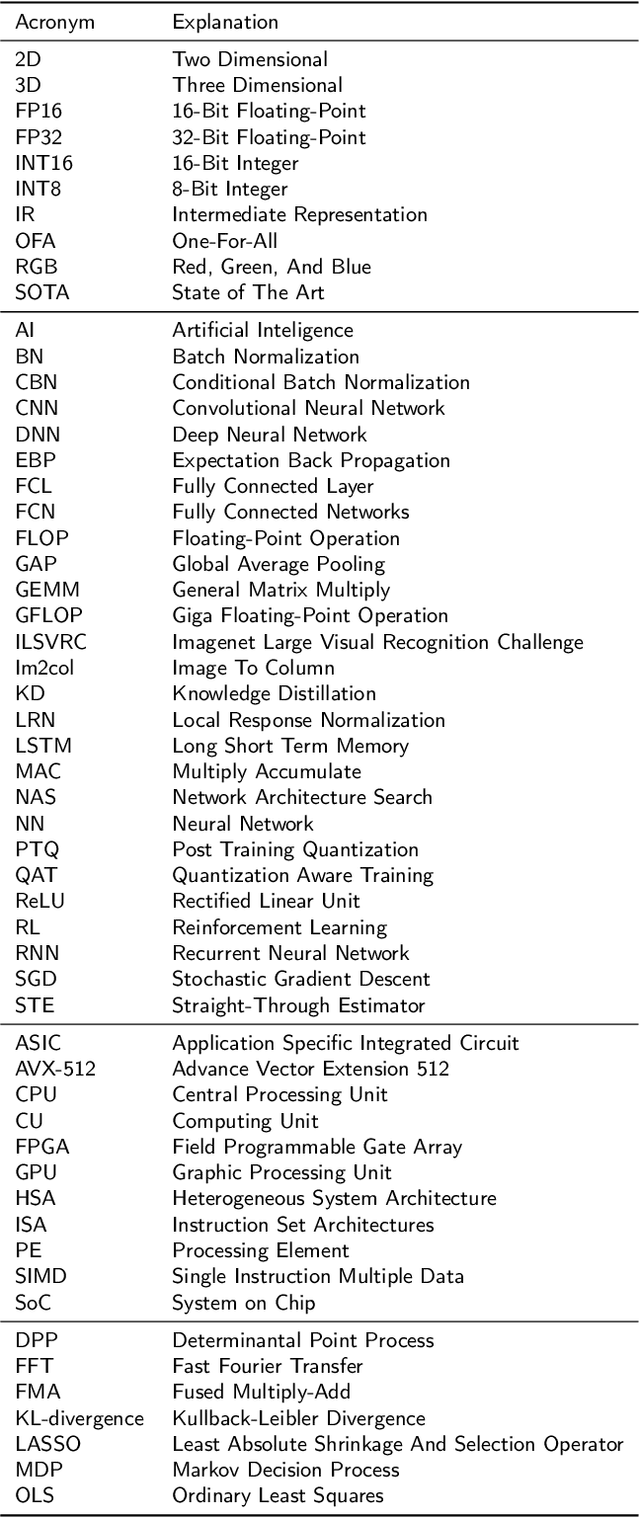Tailin Liang
Pruning and Quantization for Deep Neural Network Acceleration: A Survey
Jan 24, 2021



Abstract:Deep neural networks have been applied in many applications exhibiting extraordinary abilities in the field of computer vision. However, complex network architectures challenge efficient real-time deployment and require significant computation resources and energy costs. These challenges can be overcome through optimizations such as network compression. This paper provides a survey on two types of network compression: pruning and quantization. We compare current techniques, analyze their strengths and weaknesses, provide guidance for compressing networks, and discuss possible future compression techniques.
Dynamic Runtime Feature Map Pruning
Dec 24, 2018



Abstract:High bandwidth requirements are an obstacle for accelerating the training and inference of deep neural networks. Most previous research focuses on reducing the size of kernel maps for inference. We analyze parameter sparsity of six popular convolutional neural networks - AlexNet, MobileNet, ResNet-50, SqueezeNet, TinyNet, and VGG16. Of the networks considered, those using ReLU (AlexNet, SqueezeNet, VGG16) contain a high percentage of 0-valued parameters and can be statically pruned. Networks with Non-ReLU activation functions in some cases may not contain any 0-valued parameters (ResNet-50, TinyNet). We also investigate runtime feature map usage and find that input feature maps comprise the majority of bandwidth requirements when depth-wise convolution and point-wise convolutions used. We introduce dynamic runtime pruning of feature maps and show that 10% of dynamic feature map execution can be removed without loss of accuracy. We then extend dynamic pruning to allow for values within an epsilon of zero and show a further 5% reduction of feature map loading with a 1% loss of accuracy in top-1.
 Add to Chrome
Add to Chrome Add to Firefox
Add to Firefox Add to Edge
Add to Edge